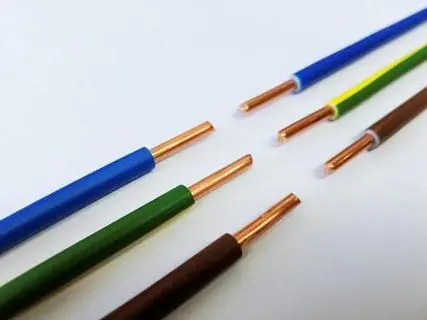Date: Apr 13rd,2024
With the increasing popularity of social intelligence, modern wiring, like the human nervous system, extends to every corner of the building, and every time we do a project, we will only think of: how many models of cables are used in this project, how many meters are used? So many wire and cable models, and their fire retardant requirements have been ignored, thus becoming a huge hidden danger of fire, so how to choose the fire retardant grade of wire and cable in the project design? This article provides the following suggestions for your reference:
01. Cable laying environment:
The cable laying environment largely determines the probability of the cable being attacked by external fire sources and the possibility of delayed combustion after fire, such as: Directly buried or alone through the pipe (metal, asbestos, cement pipe) can use non-flame retardant cables, and placed in the semi-closed bridge, cable trough or special cable trench (with cover), can appropriately reduce the flame retardant requirements of one to two, it is recommended to choose flame retardant class C, or flame retardant class D.
Because there is less chance of invasion by external causes in this environment, even if the fire is easy to self-extinguish due to the narrow and blocked space, it is not easy to cause disaster. On the contrary, indoor open dressing, through the room climbing, or hidden passage, mezzanine, tunnel corridor, human trace fire is easy to reach the space is relatively large after the fire and the air is easy to circulate, the flame retardant level should be moderately higher. It is recommended to choose flame retardant class B, or even flame retardant class A.
When the above environment is more in the high-temperature furnace before and after the furnace or flammable and explosive chemical, petroleum, mine environment must be strictly disposed of, rather than low. It is recommended to choose flame retardant Class A, or use halogen-free low smoke flame retardant class A.

The number of cables affects the level of the flame retardant of the cable, mainly the number of non-metallic cable materials in the same space to determine the level of the flame retardant category, when calculating the volume of non-metallic wire and cable materials, the concept of the same space refers to the cable fire, its flame or heat can be unhindered radiation to the nearby wire and cable and can ignite the space. For example, the same channel of the trusses or boxes with fire plates isolated from each other should refer to each bridge or box, if there is no fire isolation up and down or left and right, once the fire affects each other, the non-metallic volume of the cable is calculated to be uniformly included.


06. Power cables and non-power cables should be laid separately from each other
Relatively speaking, the power cable is easy to catch fire, because it is hot, and there is the possibility of short circuit breakdown, and the control cable signal control cable due to low voltage, the load is small in a cold state, itself is not easy to fire, so it is recommended that the two separate laying in the same space, and the power cable is on, the control cable is on, and the fire is upward, and the fire isolation measures are added in the middle. Prevent burning material from splashing down.
Contact: Alice Wong
Phone: +86 18202169643,+86 18916399470
Tel: +86 18202169643,+86 18916399470
Email: alice@sh-cables.com, terry@sh-cables.com
Add: No.7577 of Hunan Rd., Pudong New Area Shanghai 201314, China